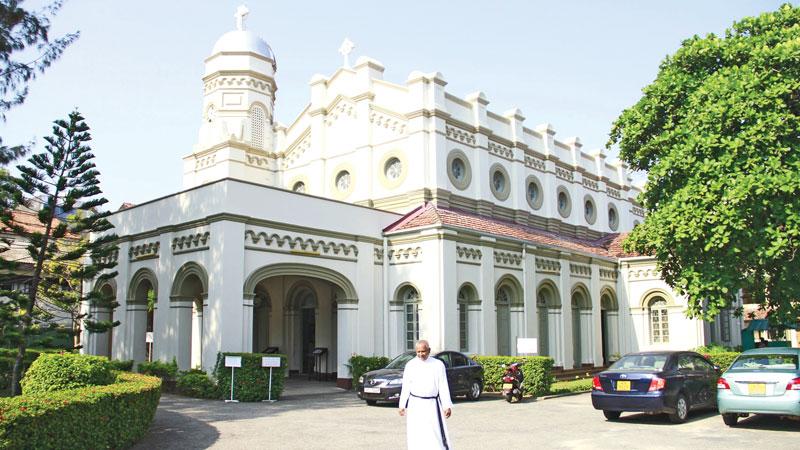
The history of the site where St. Paul’s Anglican Church, Milagiriya, is located could be traced back to the Portuguese period during the sixteenth century. The Portuguese built a Roman Catholic Church which was destroyed by the Dutch. The British built the Anglican Church in 1848, and at that time the Church had a small congregation and a school. There was a well in the Church compound which was believed to contain water with a miraculous healing quality, and people from all over the country came to this Church. Initially, the congregation consisted mainly of Europeans and Burghers.
 But, during the transition period in the 1960s, many Europeans left the Island and the Burghers migrated to Australia and England. The Church then came under the local leadership of the elite and influential. Rev. Fr. Lucien Jansz was the first Sri Lankan Vicar from 1920 to 1953.
But, during the transition period in the 1960s, many Europeans left the Island and the Burghers migrated to Australia and England. The Church then came under the local leadership of the elite and influential. Rev. Fr. Lucien Jansz was the first Sri Lankan Vicar from 1920 to 1953.
There have been many extensions done to the Church over the years. St. Paul’s Church belongs to the Church of Ceylon, which is the Anglican Church in Sri Lanka, and it is a part of the diocese of the Archbishop of Canterbury, the Reverend, Justin Welby.
The Anglican Church in Sri Lanka has two dioceses, in Colombo and Kurunegala. The current Vicar of St. Paul’s Church, Rev. Dr. Rienzie Perera says, “Unlike the Roman Church, we are not controlled or governed by Canterbury. But, we have a spiritual relationship and we have our own leader. We are in the stage of becoming a Province with accountability to the Anglican Communion. The Anglican Church has several Provinces in Asia, Europe, Australia and Africa.” The Anglican Communion is a form of governance. All the Anglicans in the world are located in different countries. They do their own governance and they have their own bishops and priests. However, they are part of the hub which is governed by the Archbishop of Canterbury, Reverend Justin Welby, but although he is the spiritual leader, he does not dictate orders.
In the left wing of St. Paul’s Church, there is a chapel called the Chapel of Our Lady. Rev. Dr. Perera says, “We don’t give the Chapel much publicity like other people do, but people come and pray there. This is a Church where the faithful come to worship. They come as a large community on Sundays. It is part of their spiritual life. We have many services, especially, the eight o’clock service. We have a lot of music and songs. We read the Bible and it is expounded, which is called the sermon or preaching.
And the significance is that it challenges the congregation to live a Christian life in the world. Your faith is not confined to the four walls of the Church, but it has to go beyond that.” The Anglican Church emphasizes scripture reading and the sacrament and does not have rituals. Rev. Dr. Perera says, “We are a Church which holds the sacrament together. The Roman Church says, because the Anglican Church broke away we don’t have the pipeline, but we question that because even they don’t have it. We are a historical Church. Our Clergy can get married. We have our own Councils where both Clergy and laity come together and then we elect our Bishop.”
St. Paul’s Church also conducts community activities for children. Rev. Fr. Perera says, “We run a home for disabled children at Mayura Place in Havelock Town. In addition, we have a project for the children of the Bambalapitiya and Wellawatte station front. They come here to learn English. They are the external things that we do to keep in touch with the community, and besides that we have our own internal activities such as, five services on Sundays as well as a daily service.
The Church is well maintained by the leadership.” St. Paul’s Church is constantly monitored by its leadership, and is accountable to the hierarchy. Rev. Fr. Perera says, “God has always been on the side of people who have been trampled or oppressed. These are the things that judge us – whether we have been with the fatherless, the widowed and the orphaned. One of the significant things is that within our Church we have Sinhalese, Tamils and Burghers. Ethnicity or culture does not override the Gospel.”
The Church has international links with Churches abroad and they are a part of the global community. The section of the congregation which migrated to different countries is linked to Churches abroad for projects. The international link broadens the Church’s perspective and horizons. St. Paul’s Church is in the process of being renovated and expanded to include a service centre for children and elders. The Church has a hall for community programs.
Pix: Dushmantha Mayadunne
